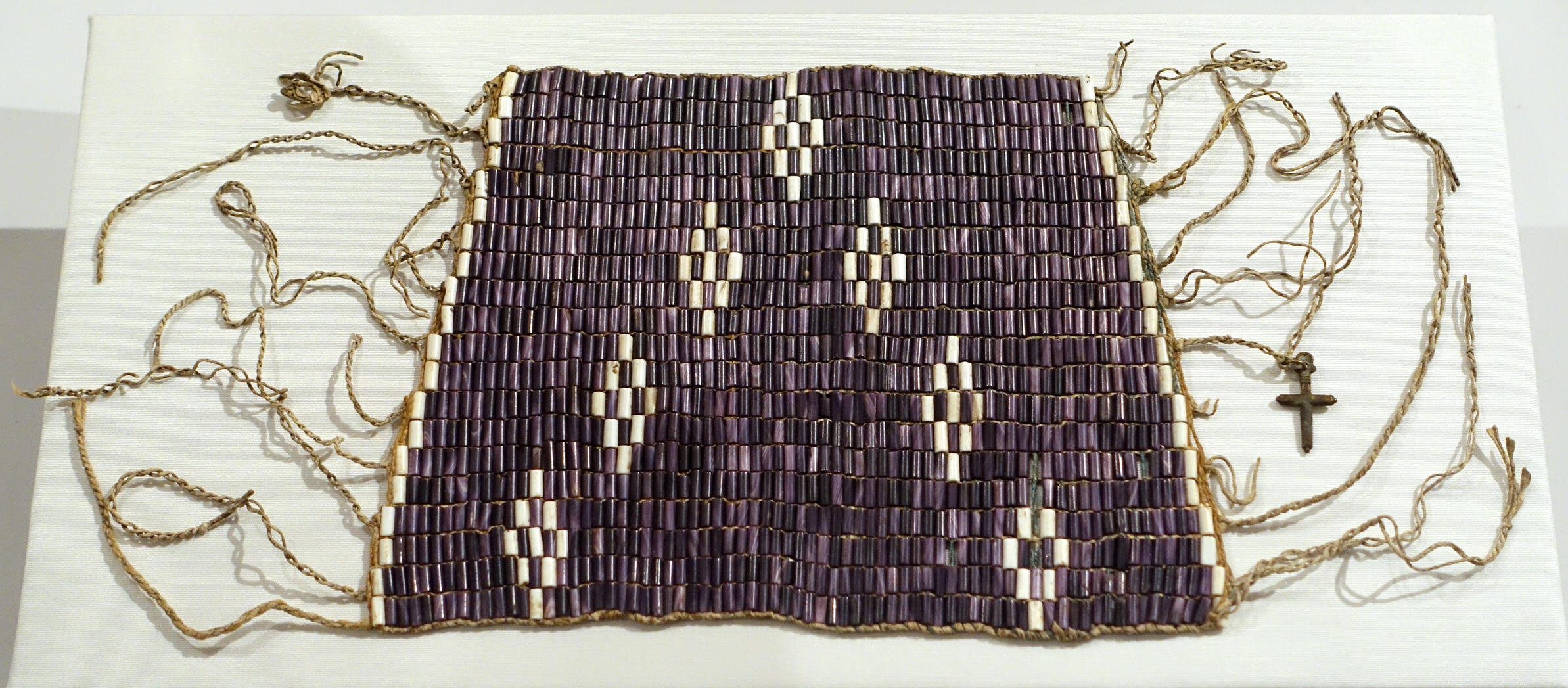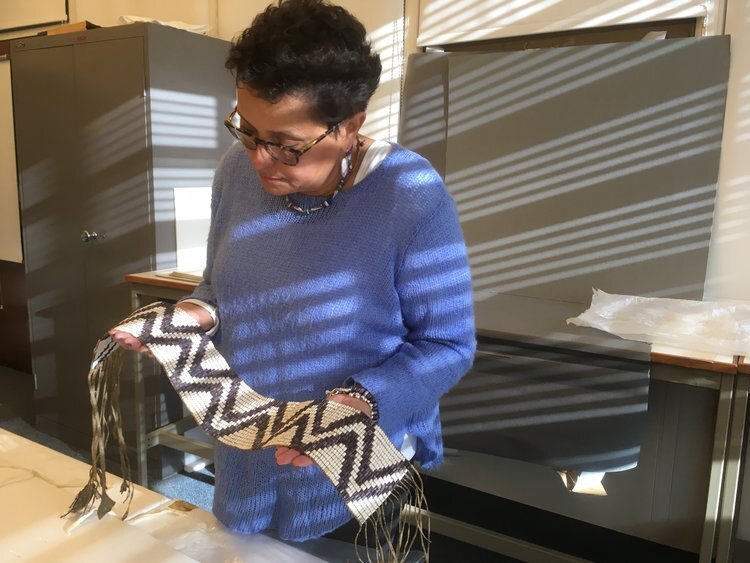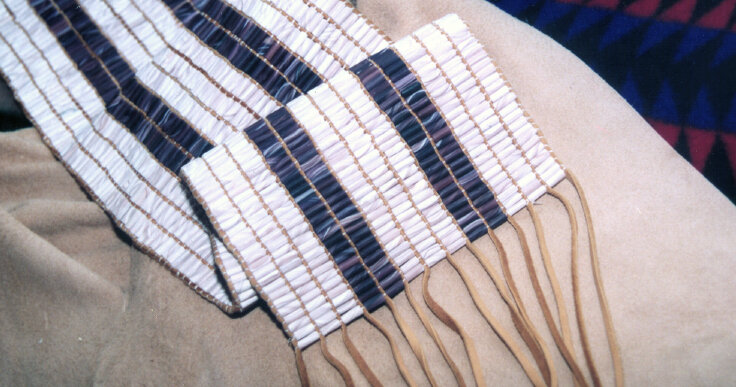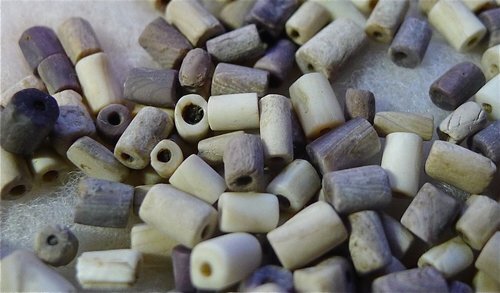
Traditional Wampum Beads
During the pre-colonial and early colonial settler era in northeastern North America (pre-1600 to 1800) Indigenous people crafted shell beads in both discoidal and cylindrical shapes from whelk (snail) and quahog (clam) shell. These beads were used for decorative, diplomatic, or ritual use in wampum strings, collars, and belts. Wampum beads and ornaments were also used as personal adornments, such as necklaces, collars, or wristlets. During the colonial era, wampum beads were also used in trade, and as a substitute for European coinage.
White beads were made from the spiral columns of whelk, and purple beads from the hinge edge of quahog. Shells were harvested where freshwater rivers meet ocean waters along the coast of northeast North America. In the mid-1700s beads were also produced from giant conch shells. Wampum-style beads were also crafted from other materials (glass, porcelain, stone, etc.) to duplicate the shape of traditional wampum beads.






